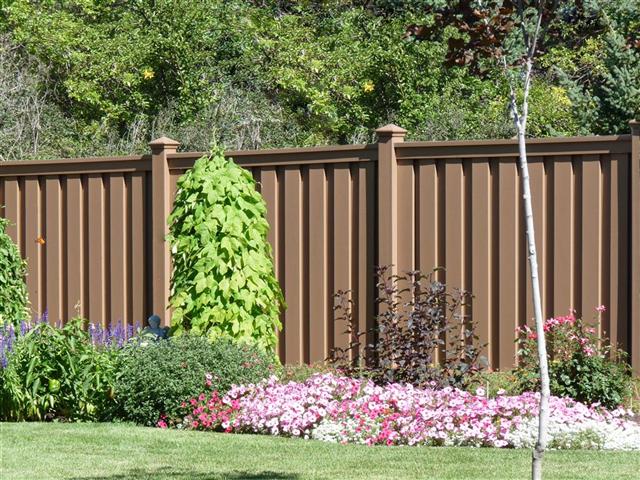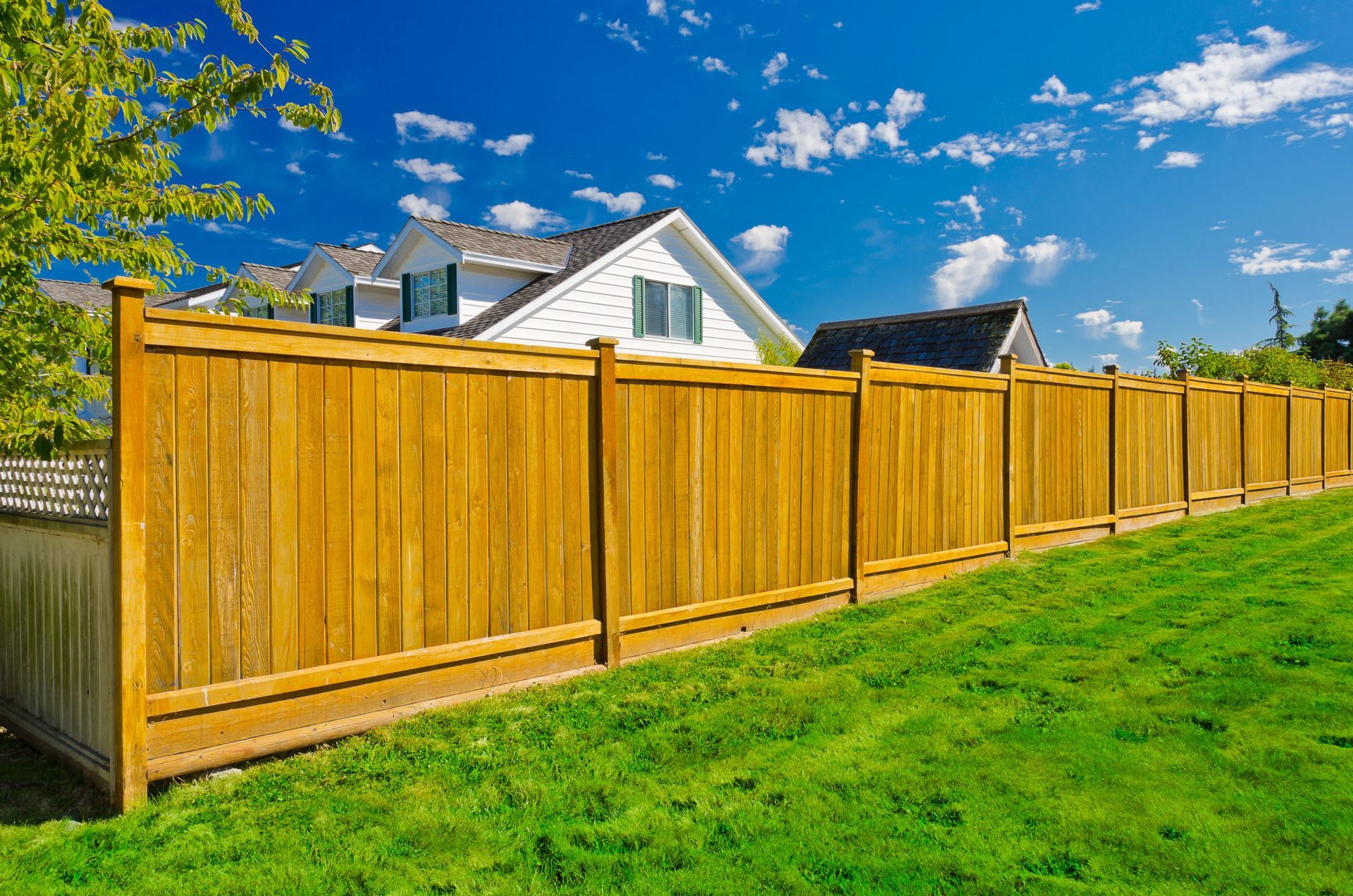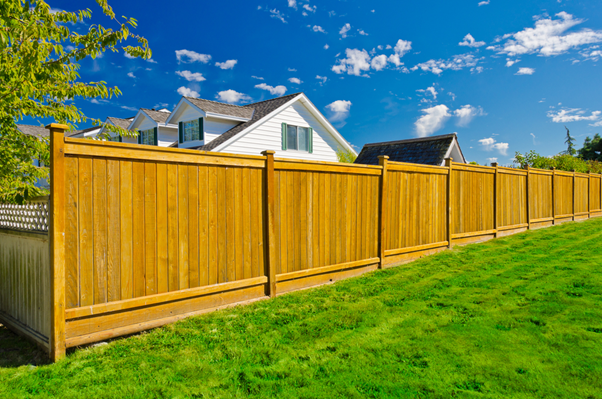All Categories
Featured
As sustainability ends up being a more considerable problem for home owners and companies alike, discovering eco-friendly choices to typical secure fencing products is significantly essential. From reducing carbon impacts to saving sources, environmentally friendly fence options offer numerous ecological advantages. In this post, we will explore numerous lasting fence materials that can help you create a durable and eco-conscious border for your residential or commercial property.
![]()
Environmental Benefits: Bamboo absorbs co2 and releases oxygen at a much faster rate than various other plants, making it an excellent selection for decreasing greenhouse gases. It additionally requires little to no plant foods or pesticides, even more decreasing its environmental impact. Sturdiness: Bamboo is resistant and naturally solid to insects, decay, and dampness, making it an excellent fence option for long-term use. If properly treated, it can likewise endure extreme weather condition problems. Aesthetic Charm: Bamboo gives a stylish and special look that functions well in different design plans, consisting of tropical, Zen, and modern-day city settings. While bamboo needs some maintenance, such as routine cleaning up and sealing, it is a trendy and highly sustainable selection for environment-friendly secure fencing.
Environmental Benefits: By choosing recycled wood, you are aiding to decrease logging and avoid useful products from being thrown out. Additionally, repurposing wood conserves energy that would or else be invested in generating new wood products. Resilience: Recycled wood can be equally as strong and long lasting as newly sourced wood, especially if it is appropriately dealt with. Nonetheless, it might need additional upkeep to shield it from weathering and pests. Aesthetic Appeal: Recycled timber fences have a rustic appeal and can add a distinct, weather-beaten appearance to your home. They can likewise be discolored or repainted to fit your personal style. One consideration with recycled wood is that, gradually, it may need more maintenance compared to other materials, but its eco-friendliness makes it worth the initiative.
![]()
Environmental Advantages: Aluminum and steel can be recycled indefinitely without shedding top quality. This decreases the demand for new resources and the ecological impact of steel manufacturing. Resilience: Steel fencings are incredibly sturdy, calling for little to no maintenance gradually. They are immune to the elements, consisting of uv, rain, and wind damage, making them durable. Aesthetic Allure: Metal fences can be tailored in a variety of styles, from contemporary layouts to extra conventional appearances. While they might not offer as much privacy as timber, they can be made use of to create stylish, modern-day borders for your residential or commercial property. Aluminum and steel fences are ideal for those looking for a lasting and low-maintenance alternative that still offers an attractive appearance.
Ecological Benefits: Living fences assist enhance air top quality by taking in co2, and they can additionally support wildlife by offering natural environments. Moreover, they help reduce environmental pollution and enhance water retention, making them an eco helpful selection. Sturdiness: While living fencings require more upkeep (regular trimming and treatment), they can last for lots of years with correct focus. Aesthetic Appeal: A living fencing provides a lovely and organic look, blending flawlessly into all-natural landscapes. It can offer privacy and protection while boosting the appeal of your residential or commercial property. The disadvantage is that living fencings require even more effort and time to develop and preserve, but they use long-lasting ecological advantages that far outweigh the work involved.
![]()
Environmental Advantages: Hemp expands promptly, needs little water, and needs no pesticides, making it an ecologically friendly selection for fencing. It also helps to restore soil wellness and decreases the requirement for chemical plant foods. Resilience: Hemp fencings are resilient, long-lasting, and immune to mold and mildew and pests, using dependable protection for your home. Hemp fencing is still a reasonably new choice, and schedule may differ. Aesthetic Appeal: Hemp fencings have a one-of-a-kind and natural look, commonly resembling woven floor coverings or webs, and can be made use of to produce appealing, eco-conscious limits. Hemp fencing is not yet as widely available as other materials, however it's a promising green choice that is acquiring grip.
Verdict: Select Eco-Friendly Fence for a Sustainable Future. When it concerns choosing the appropriate fence for your residential property, environmentally friendly choices such as bamboo, recycled timber, steel, living fencings, and hemp are exceptional options for those that focus on sustainability. These materials not only add to lowering ecological impact but also give resilient, eye-catching boundaries that boost your building's visual charm. Whether you're aiming to create privacy, boost security, or merely add an aesthetic touch, green fencing materials supply an option that is both liable and stunning.

- Bamboo Fence: A Fast-Growing Renewable Source. Bamboo is among the most sustainable products offered for fencing. Unlike conventional hardwoods, bamboo grows incredibly promptly, with some varieties reaching maturation in simply 3-5 years. This makes it an extremely eco-friendly source, as it can be collected without harming the plant or the atmosphere.
Environmental Benefits: Bamboo absorbs co2 and releases oxygen at a much faster rate than various other plants, making it an excellent selection for decreasing greenhouse gases. It additionally requires little to no plant foods or pesticides, even more decreasing its environmental impact. Sturdiness: Bamboo is resistant and naturally solid to insects, decay, and dampness, making it an excellent fence option for long-term use. If properly treated, it can likewise endure extreme weather condition problems. Aesthetic Charm: Bamboo gives a stylish and special look that functions well in different design plans, consisting of tropical, Zen, and modern-day city settings. While bamboo needs some maintenance, such as routine cleaning up and sealing, it is a trendy and highly sustainable selection for environment-friendly secure fencing.
- Recycled Wood Secure Fencing: Giving Old Products New Life. Recycled timber is one more superb eco-friendly fence choice. Using reclaimed wood from old barns, pallets, or various other frameworks can help in reducing the demand for recently collected lumber, saving trees and reducing waste in garbage dumps.
Environmental Benefits: By choosing recycled wood, you are aiding to decrease logging and avoid useful products from being thrown out. Additionally, repurposing wood conserves energy that would or else be invested in generating new wood products. Resilience: Recycled wood can be equally as strong and long lasting as newly sourced wood, especially if it is appropriately dealt with. Nonetheless, it might need additional upkeep to shield it from weathering and pests. Aesthetic Appeal: Recycled timber fences have a rustic appeal and can add a distinct, weather-beaten appearance to your home. They can likewise be discolored or repainted to fit your personal style. One consideration with recycled wood is that, gradually, it may need more maintenance compared to other materials, but its eco-friendliness makes it worth the initiative.
- Metal Fencing: Recyclable and Lasting. Steel secure fencing, especially aluminum and steel, is a environmentally friendly and long lasting choice. These materials can be made from recycled metals, lowering the demand for mining and basic material removal, both of which are energy-intensive processes.

Environmental Advantages: Aluminum and steel can be recycled indefinitely without shedding top quality. This decreases the demand for new resources and the ecological impact of steel manufacturing. Resilience: Steel fencings are incredibly sturdy, calling for little to no maintenance gradually. They are immune to the elements, consisting of uv, rain, and wind damage, making them durable. Aesthetic Allure: Metal fences can be tailored in a variety of styles, from contemporary layouts to extra conventional appearances. While they might not offer as much privacy as timber, they can be made use of to create stylish, modern-day borders for your residential or commercial property. Aluminum and steel fences are ideal for those looking for a lasting and low-maintenance alternative that still offers an attractive appearance.
- Living Fences: Nature's Own Barrier. Living fences, or hedgerows, are a all-natural and eco-friendly option to conventional fence materials. These fencings are made up of thick shrubs, trees, or creeping plants that expand to create a boundary.
Ecological Benefits: Living fences assist enhance air top quality by taking in co2, and they can additionally support wildlife by offering natural environments. Moreover, they help reduce environmental pollution and enhance water retention, making them an eco helpful selection. Sturdiness: While living fencings require more upkeep (regular trimming and treatment), they can last for lots of years with correct focus. Aesthetic Appeal: A living fencing provides a lovely and organic look, blending flawlessly into all-natural landscapes. It can offer privacy and protection while boosting the appeal of your residential or commercial property. The disadvantage is that living fencings require even more effort and time to develop and preserve, but they use long-lasting ecological advantages that far outweigh the work involved.

- Hemp Fencing: Natural and Lasting. Hemp is a environmentally friendly and fast-growing plant that can be used to develop lasting secure fencing. Hemp fibers are strong, eco-friendly, and resistant to bugs and mold, making it a wonderful option for building fencings.
Environmental Advantages: Hemp expands promptly, needs little water, and needs no pesticides, making it an ecologically friendly selection for fencing. It also helps to restore soil wellness and decreases the requirement for chemical plant foods. Resilience: Hemp fencings are resilient, long-lasting, and immune to mold and mildew and pests, using dependable protection for your home. Hemp fencing is still a reasonably new choice, and schedule may differ. Aesthetic Appeal: Hemp fencings have a one-of-a-kind and natural look, commonly resembling woven floor coverings or webs, and can be made use of to produce appealing, eco-conscious limits. Hemp fencing is not yet as widely available as other materials, however it's a promising green choice that is acquiring grip.
Verdict: Select Eco-Friendly Fence for a Sustainable Future. When it concerns choosing the appropriate fence for your residential property, environmentally friendly choices such as bamboo, recycled timber, steel, living fencings, and hemp are exceptional options for those that focus on sustainability. These materials not only add to lowering ecological impact but also give resilient, eye-catching boundaries that boost your building's visual charm. Whether you're aiming to create privacy, boost security, or merely add an aesthetic touch, green fencing materials supply an option that is both liable and stunning.
Latest Posts
Your Source for Fencing Excellence in Design and Installation
Published Feb 23, 25
1 min read
Full-Service Vehicle Repair Work in Chicago-- Book a Visit Now!
Published Feb 23, 25
1 min read
Reliable and Affordable Bath Remodeling in Metro Detroit
Published Feb 23, 25
1 min read